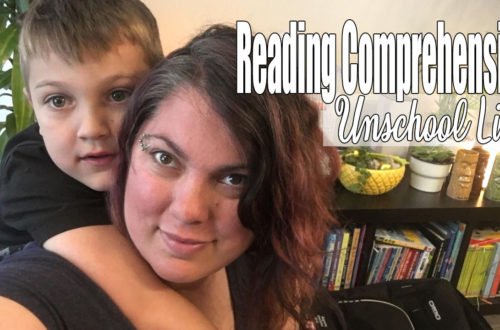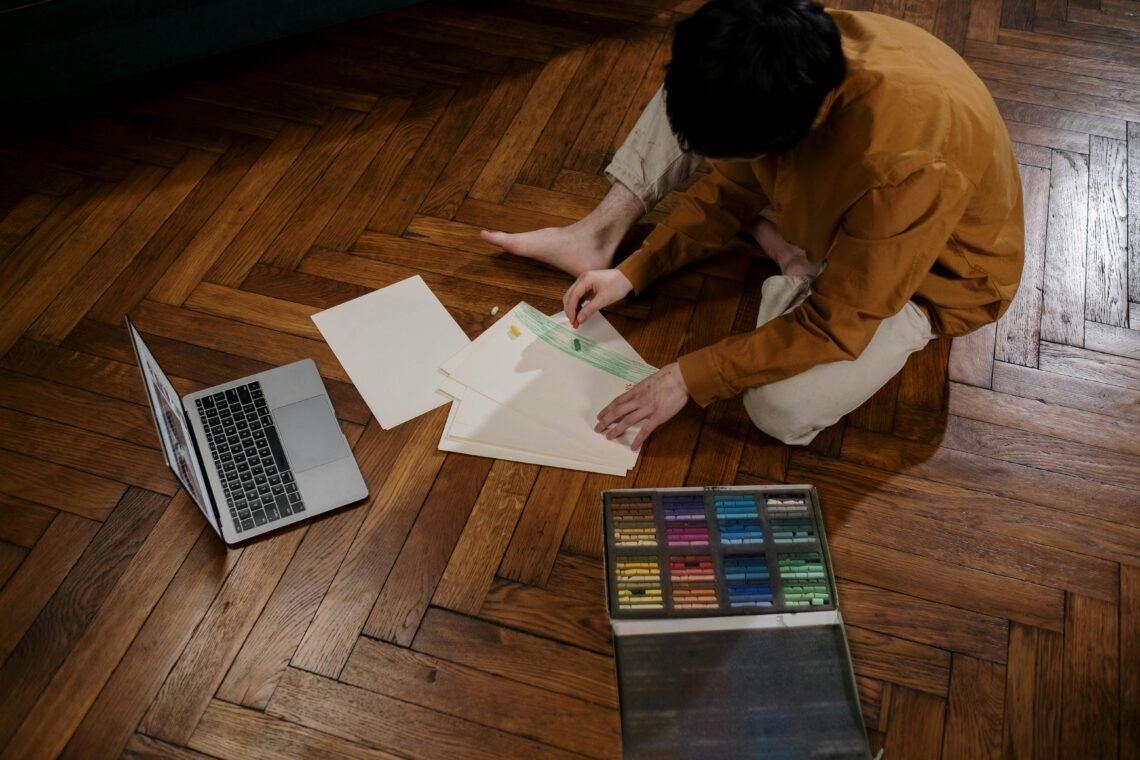
Deschooling: How to Transition from Traditional School to Unschooling
We are a participant in the Amazon Services LLC Associates Program and other affiliate programs. An affiliate advertising is designed to provide a means for us to earn fees by linking to Amazon.com and affiliated sites. This post may contain affiliate links.
Making the leap from traditional schooling to unschooling can feel overwhelming, but that’s where deschooling comes in! Deschooling is the essential transition period that helps both parents and children unlearn school-based mindsets and embrace natural learning. If you’ve ever wondered, “How will my child learn without formal lessons?” or “Am I doing enough as a parent?”, deschooling provides the clarity and confidence you need to move forward.
In traditional schools, children are conditioned to follow schedules, complete assignments, and seek approval from teachers. This structure often leads to burnout, resistance, and a loss of natural curiosity. Deschooling allows children to rediscover their love for learning without the pressure of grades, standardized testing, or rigid curriculums. It also gives parents time to shift their mindset from one of control to trust, where they see learning happening in everyday life—from baking a cake to building a fort or asking endless “why” questions about the world.
This guide will walk you through everything you need to know about deschooling: what it is, why it’s necessary, how to recognize when you and your child need it, and how to successfully transition into an unschooling lifestyle. Whether you’re considering unschooling, homeschooling, or simply taking a break from traditional education, understanding deschooling is the first step toward a more relaxed, joyful, and child-led learning experience.
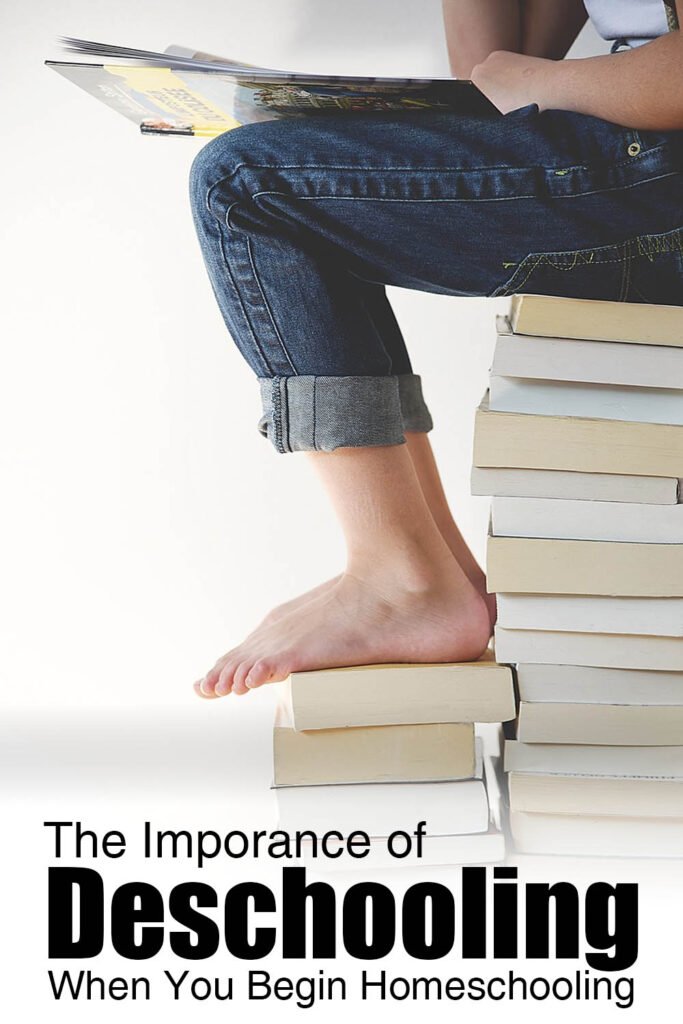
What is Deschooling and Why is it Important?
Deschooling is the process of shedding the traditional school mindset and embracing a more natural, self-directed way of learning.
When children (and parents) leave the structured environment of school, they often carry ingrained beliefs about education—such as the need for rigid schedules, external validation, and standardized assessments. Deschooling provides the time and space to unlearn these habits and discover a new approach to education that is driven by curiosity and intrinsic motivation.
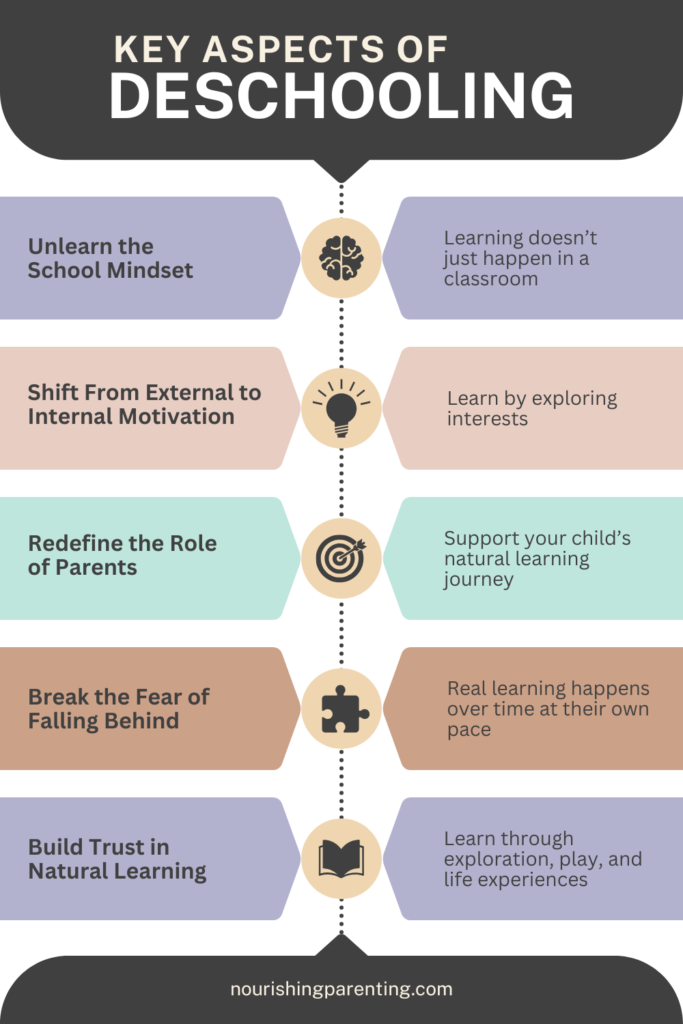
Key Aspects of Deschooling:
- Unlearning the School Mindset: Letting go of the idea that learning must happen in a structured classroom setting with grades and tests.
- Shifting from External to Internal Motivation: Encouraging children to explore their interests rather than relying on assignments and teacher approval.
- Redefining the Role of Parents: Transitioning from the role of instructor to that of a facilitator who supports their child’s natural learning journey.
- Breaking the Fear of Falling Behind: Understanding that real learning happens at different paces and in many ways outside of textbooks and formal lessons.
- Building Trust in Natural Learning: Observing how children learn through play, exploration, and real-life experiences rather than forced instruction.
Deschooling is not just a break from schoolwork—it’s a mindset shift that helps families embrace lifelong, passion-driven learning. It lays the foundation for a smooth and fulfilling transition into unschooling, where education becomes a joyful, integrated part of daily life.
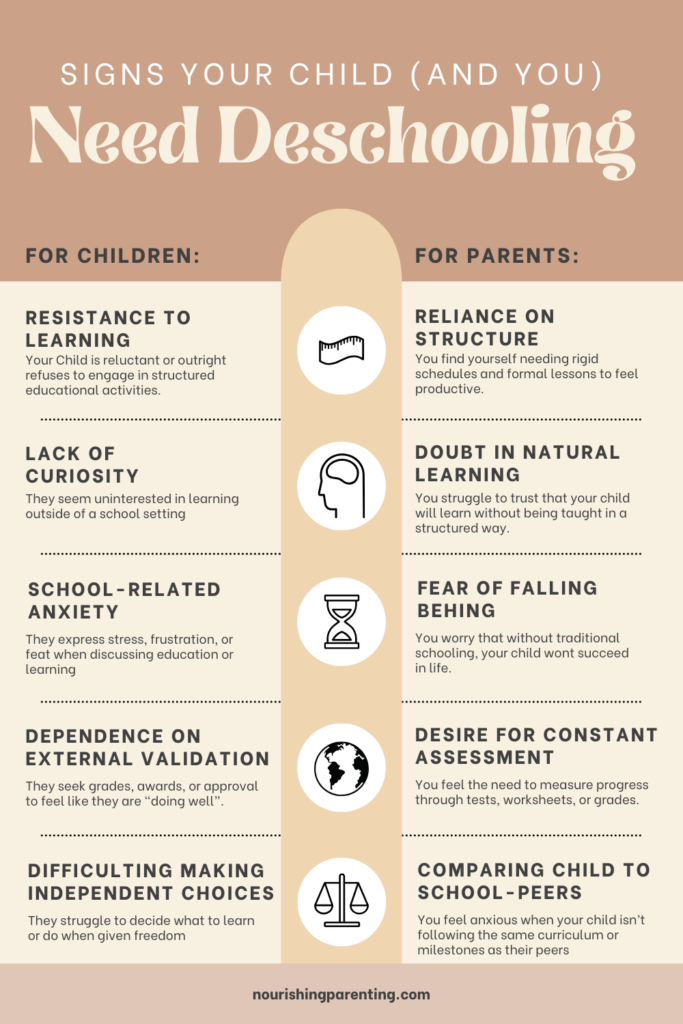
Signs Your Child (and You) Need Deschooling
Deschooling isn’t just for children; parents need it too! If you or your child are experiencing any of the following, it may be time to embrace the deschooling process:
For Children:
- Resistance to Learning: Your child is reluctant or outright refuses to engage in structured educational activities.
- Lack of Curiosity: They seem uninterested in learning outside of a school setting.
- School-Related Anxiety: They express stress, frustration, or fear when discussing education or learning.
- Dependence on External Validation: They seek grades, awards, or approval to feel like they are “doing well.”
- Difficulty Making Independent Choices: They struggle to decide what to learn or do when given freedom.
For Parents:
- Reliance on Structure: You find yourself needing rigid schedules and formal lessons to feel productive.
- Doubt in Natural Learning: You struggle to trust that your child will learn without being taught in a structured way.
- Fear of Falling Behind: You worry that without traditional schooling, your child won’t succeed in life.
- Desire for Constant Assessment: You feel the need to measure progress through tests, worksheets, or grades.
- Comparing Your Child to School-Peers: You feel anxious when your child isn’t following the same curriculum or milestones as their traditionally schooled peers.
Recognizing these signs is the first step toward embracing a new, more freeing way of learning. Deschooling allows both children and parents to break free from these limiting beliefs and discover a more authentic, joyful approach to education.
Remember that there is nothing wrong with structure, tests, or any other key components of the traditional school system. But these typically do not align with the unschooling approach to homeschooling.
At the end of the day, you must do what works best for you and your family. If you are seeing these signs and you want to take an unschooling approach, deschooling may be right for you.
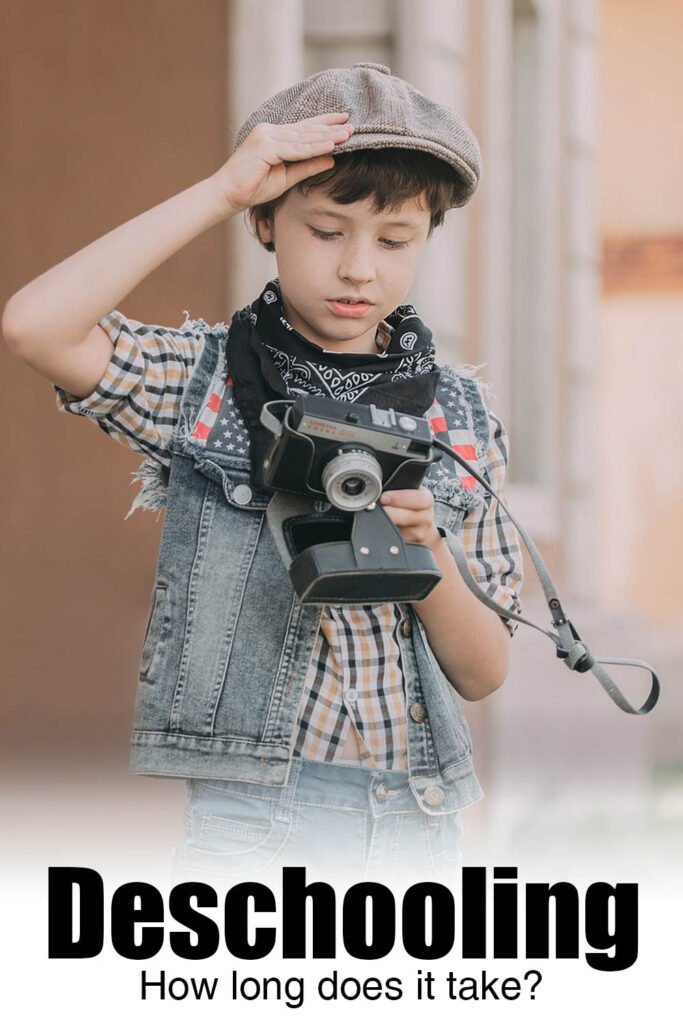
How Long Should Deschooling Last?
A common guideline suggests deschooling for about one month for each year a child spent in traditional schooling. However, this is just an estimate—some children and parents may need more or less time. Factors such as a child’s past school experiences, their personality, and parental anxieties can all influence the length of the deschooling period. Instead of focusing on a set timeframe, observe your child’s natural curiosity and engagement levels. You’ll know deschooling is complete when learning feels organic and enjoyable, rather than something that must be scheduled or forced.
Steps to a Successful Deschooling Process
- Step 1: Take a Break from Structured Learning
Give yourself and your child permission to pause formal education. Instead of worksheets and lesson plans, let the focus be on rest, play, and decompressing from the pressures of traditional schooling. This break helps reset expectations and removes the pressure to “keep up” with school-based timelines. - Step 2: Focus on Deprogramming School-Based Habits
Recognize the ingrained beliefs that learning must be rigid, assessed, or externally validated. Shift away from thinking of learning as something that only happens during “school hours” and start observing how curiosity naturally drives exploration and knowledge acquisition. - Step 3: Reconnect with Natural Curiosity and Play
Encourage activities that spark joy and engagement, such as reading for pleasure, exploring nature, creating art, or building things. Follow your child’s lead and observe what excites them—this is the foundation of self-directed learning. - Step 4: Follow Your Child’s Interests and Passions
Once they have decompressed from school pressures, notice what they gravitate towards. Whether it’s dinosaurs, music, technology, or cooking, provide resources, tools, and opportunities that align with their interests. Learning thrives when it is personally meaningful. - Step 5: Reflect on and Redefine Your Role as a Parent and Facilitator
Instead of being a teacher who enforces structured lessons, shift to being a mentor and guide. Your role is to support your child’s learning journey by providing resources, asking thought-provoking questions, and encouraging exploration. Trust in the process and embrace a collaborative approach to education.

Deschooling to Unschooling
Deschooling is a powerful and necessary step toward embracing a child-led, curiosity-driven education.
By allowing time to break free from conventional school habits, both parents and children can rediscover the joy of natural learning. The key is patience, trust, and an open mind. As you transition into unschooling, remember that education is a lifelong journey—one filled with wonder, exploration, and limitless possibilities. Embrace the process, trust in your child’s ability to learn, and enjoy the freedom that comes with self-directed education!


